Filter by
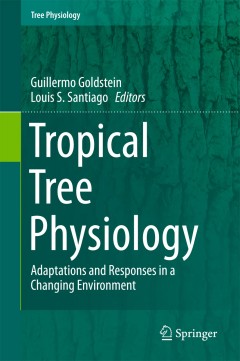
Tropical Tree Physiology
This book presents the latest information on tropical tree physiology, making it a valuable research tool for a wide variety of researchers. It is also of general interest to ecologists (e.g. Ecological Society of America; > 3000 or 4000 members at annual meeting), physiologists (e.g. American Society of Plant Biologists; > 2,000 members at annual meeting), and tropical biologists (e.g. Associa…
- Edition
- 1
- ISBN/ISSN
- -
- Collation
- XVIII, 467
- Series Title
- Tree Physiology
- Call Number
- -
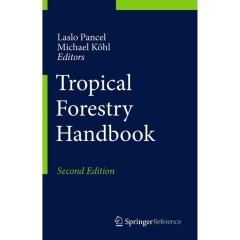
Tropical Forestry Handbook
This book provides a cross-section of all outstanding experience in all fields of tropical forestry under a drastically changing environment induced by climate change. It sheds light on the existing know-how and presents it in a concise and efficient way for the scientist and professional in charge of planning, implementing and evaluating forest resources. The Tropical Forestry Handbook provide…
- Edition
- 1
- ISBN/ISSN
- 978-3-642-54600-6
- Collation
- LX, 3633
- Series Title
- -
- Call Number
- -
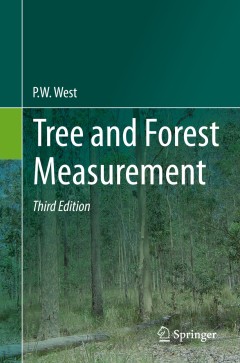
Tree and Forest Measurement
Affordable introduction to the practices of forest measurement for everyone who works with trees from the farmer to the forest Includes latest developments in forest biomass measurement and remote sensing Fully revised edition with many tips and insights into forest mensuration
- Edition
- 1
- ISBN/ISSN
- 978-3-319-14708-6
- Collation
- XII, 214
- Series Title
- -
- Call Number
- -
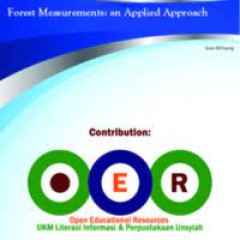
Forest Measurements : an Applied Approach
Forested ecosystems occupy a rich array of varied landforms. In the Pacific Northwest, this diversity is readily apparent as one surveys the landscape– volcanic peaks contrast with wide valleys; steep, forested hillsides surround gently rolling savannas; and rapidly cascading mountain streams transition to meandering river floodplains. This varied topography is an integral part of the fo…
- Edition
- -
- ISBN/ISSN
- -
- Collation
- -
- Series Title
- -
- Call Number
- 634.9 DEY f

Biodiversity and Conservation in Forests
Global forest communities cover only about 30% of land areas, but they provide important ecosystem services, such as watershed protection, carbon sequestration, and oxygen production, as well as renewable forest products for human subsistence and markets. Forests also support the majority of the world’s terrestrial biodiversity. Although land conversion for agriculture and pastureland has…
- Edition
- -
- ISBN/ISSN
- 978-3-03897-575-5
- Collation
- -
- Series Title
- -
- Call Number
- 634 BIO

National Forest Inventories
The book presents the current state and good practices of national forest inventories in monitoring wood resources and demonstrates pathways for harmonisation and improved common reporting. Beyond a general overview over availability and use of wood resources in different countries, it provides a unique collection of original contributions from national forest inventory experts with in-depth de…
- Edition
- 1
- ISBN/ISSN
- 978-3-319-44014-9
- Collation
- XXXII, 845
- Series Title
- -
- Call Number
- -

Mycorrhizal Networks
The last 25 years have seen significant advances in our understanding of the mycorrhizal fungi that colonize most of the world’s plants, and the mycorrhizal networks that form and extend into the soil beyond plant roots. In addition to a thorough review of recent research on mycorrhizal networks, this book provides readers with alternative perspectives. The book is organized into three sectio…
- Edition
- 1
- ISBN/ISSN
- 978-94-017-7394-2
- Collation
- XVIII, 286
- Series Title
- Ecological Studies
- Call Number
- -
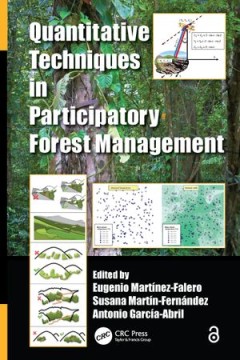
Quantitative Techniques in Participatory Forest Management
Forest management has evolved from a mercantilist view to a multi-functional one that integrates economic, social, and ecological aspects. However, the issue of sustainability is not yet resolved. Quantitative Techniques in Participatory Forest Management brings together global research in three areas of application: inventory of the forest variables that determine the main environmental indice…
- Edition
- -
- ISBN/ISSN
- 9781466569256, 1466569255
- Collation
- -
- Series Title
- -
- Call Number
- -
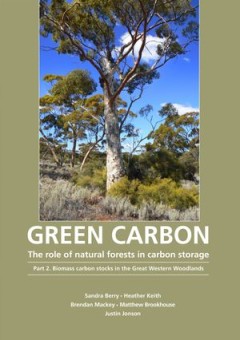
Green Carbon Part 2 The role of natural forests in carbon storage
This report is the second in a series that examines the role of natural forests and woodlands in the storage of carbon. Understanding the role of natural ecosystems in carbon storage is an important part of solving the climate change problem. This report presents a landscape-wide green carbon account of the ‘Great Western Woodlands’ (GWW), sixteen million hectares of mostly contiguous natur…
- Edition
- -
- ISBN/ISSN
- 9781921666711
- Collation
- -
- Series Title
- -
- Call Number
- -
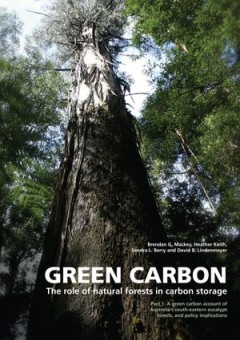
Green Carbon Part 1 The role of natural forests in carbon storage
The colour of carbon matters. Green carbon is the carbon stored in the plants and soil of natural ecosystems and is a vital part of the global carbon cycle. This report is the first in a series that examines the role of natural forests in the storage of carbon, the impacts of human land use activities, and the implications for climate change policy nationally and internationally. REDD (“reduc…
- Edition
- -
- ISBN/ISSN
- 9781921313882
- Collation
- -
- Series Title
- -
- Call Number
- -
 Computer Science, Information & General Works
Computer Science, Information & General Works  Philosophy & Psychology
Philosophy & Psychology  Religion
Religion  Social Sciences
Social Sciences  Language
Language  Pure Science
Pure Science  Applied Sciences
Applied Sciences  Art & Recreation
Art & Recreation  Literature
Literature  History & Geography
History & Geography